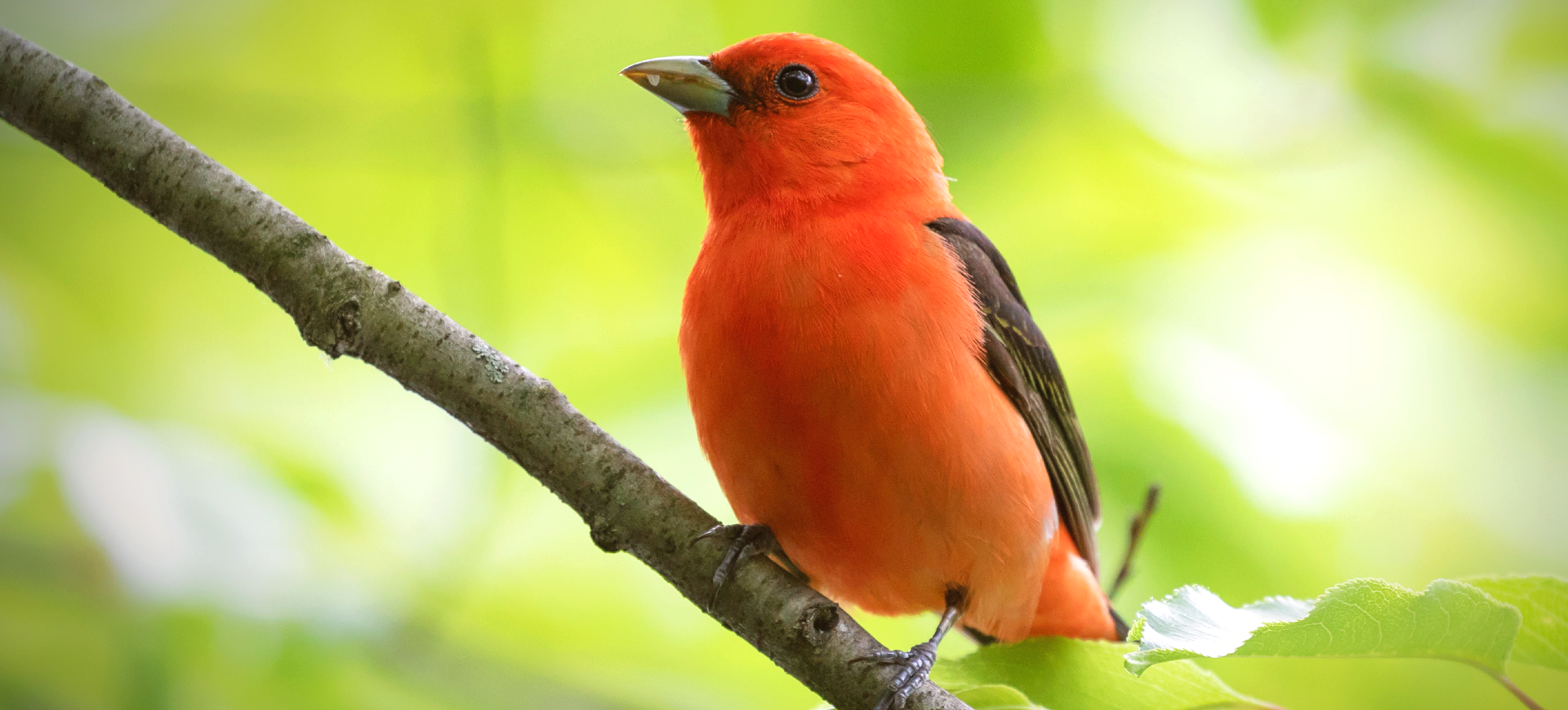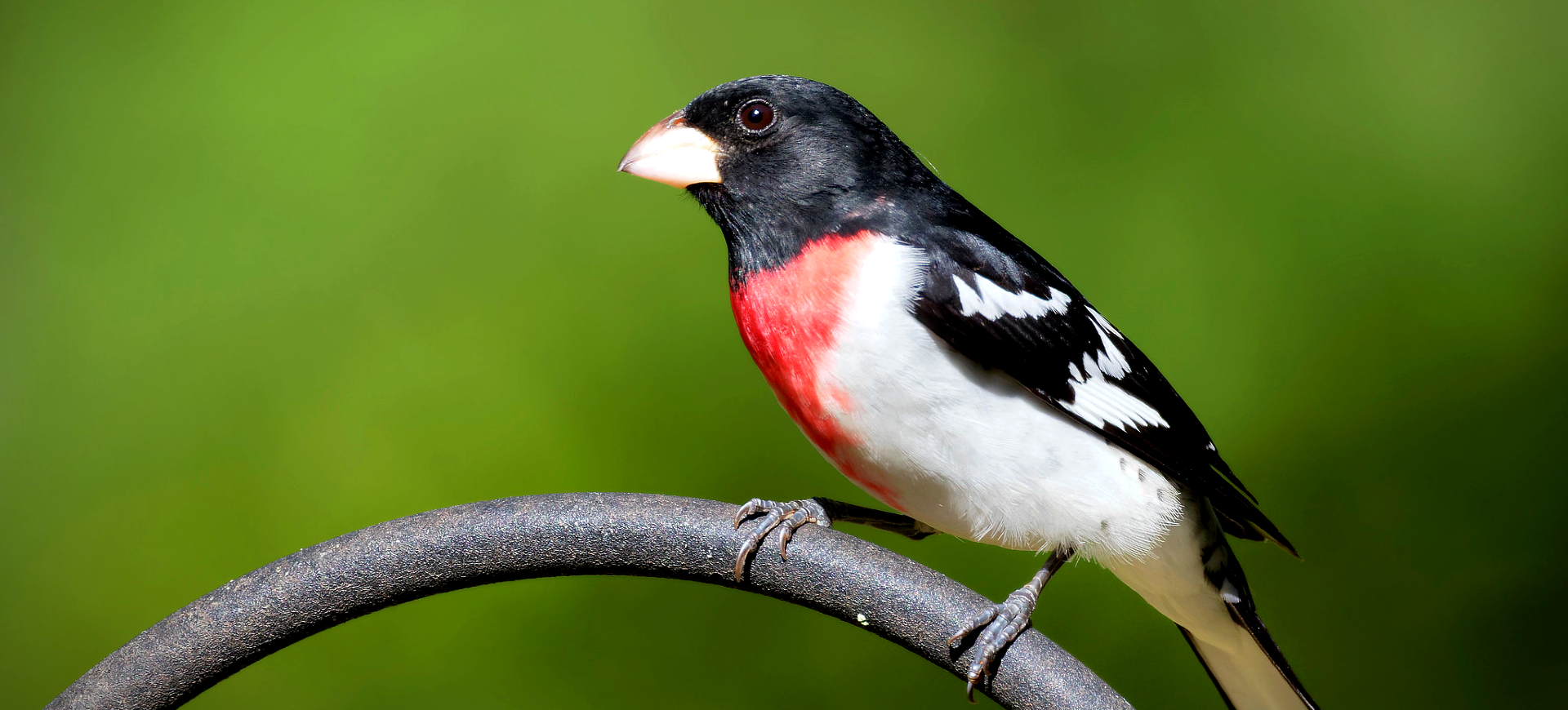Overview
The Northern Cardinal, scientifically known as Cardinalis cardinalis, is a widely recognized bird native to North and Central America. Known for its vivid red plumage, the male Northern Cardinal is one of the most striking and easily identifiable birds in these regions. Females, while less colorful with their brownish feathers and red accents, are equally elegant. These birds are medium-sized songbirds with a distinctive crest on their head and a robust, conical bill.
Northern Cardinals are non-migratory and are known for their loud, clear whistles, which vary in tone and pattern. They are commonly found in woodlands, gardens, shrublands, and wetlands. Cardinals are adaptable and have thrived in suburban and urban areas, often frequenting bird feeders. Their diet mainly consists of seeds, grains, fruits, and insects.
They play a significant role in seed dispersal, contributing to the health of their ecosystems. Cardinals are monogamous and are known for their elaborate courtship rituals. These birds are also territorial, with males often vigorously defending their breeding territory. The Northern Cardinal’s popularity is evident as it is the state bird of seven U.S. states.
Taxonomy
Kingdom
Phylum
Class
Order
Family
Genus
Species
Sub Species
Type
Physical Description:
Northern Cardinals are medium-sized songbirds with a body length of about 8-9 inches and a wingspan of 10-12 inches. Males are renowned for their brilliant red plumage, which covers most of their body except for a black mask on their face. Females are more subdued, primarily brown, with reddish tinges on the wings, tail, and crest.
They have a prominent crest on their head, which can be raised or lowered. Their bill is short, stout, and conical, ideal for cracking seeds, a primary component of their diet. Both sexes have a similar shape and size, but the male’s vibrant coloration makes them more conspicuous. The juvenile cardinals resemble females but are even duller in color and lack the bright red beak of adults.

Lifespan: Wild: ~15 years || Captivity: ~15 years

Weight: Male & Female: 1.4-1.7 oz (40-48 g)

Length: Male & Female: 8-9 inches (20-23 cm)

Wingspan: Male & Female: 10-12 inches (25-31 cm)

Top Speed: 20-30 mph (32-48 km/h)
Characteristic:
Native Habitat:
Northern Cardinals are highly adaptable birds, inhabiting a diverse array of environments. They are commonly found in woodlands, gardens, wetlands, and shrublands, showcasing their ability to thrive in various natural and human-modified landscapes. Their preference for forest edges and overgrown fields provides abundant food sources and suitable nesting areas. Suburban and urban areas with dense vegetation cover, such as parks and backyards, also make ideal habitats for these birds.
The native range of the Northern Cardinal extends across a wide swath of the eastern United States, reaching as far south as Mexico and parts of Central America. This range includes a variety of climatic and ecological regions, demonstrating the cardinal’s adaptability to different environmental conditions. Cardinals are particularly prevalent in the southeastern United States, where their bright plumage and melodic songs are common in many neighborhoods. Their presence across such a wide area is a testament to their resilience and versatility in habitat preferences.
Climate Zones:
Biogeographical Realms:
Continents:
Diet:
Diet & Feeding Habits:
Northern Cardinals are primarily granivorous, feeding on various seeds, grains, and fruits. They are frequent visitors to bird feeders, where they prefer sunflower seeds, safflower seeds, and cracked corn. In addition to plant material, they consume insects, especially during breeding, when they require additional protein.
Their strong beaks are well adapted for cracking open seeds and snipping insects. Cardinals typically forage on the ground or in low bushes. They are known to be opportunistic feeders, taking advantage of food sources in their environments. When food is scarce in winter, they often join mixed-species foraging flocks to find sustenance.
Mating Behavior:
Mating Description:
Northern Cardinals are monogamous, with pairs often forming strong pair bonds. During courtship, males exhibit various behaviors to attract females, such as singing, feeding her beak-to-beak, and performing flight displays. The male shows off his bright plumage and sings loud, complex songs from prominent perches to defend his territory and attract a mate.
Nesting is primarily the female’s responsibility, who constructs the nest using twigs, bark strips, and grasses. The male provides food for the female during nest building and egg laying. Females typically lay 3-4 eggs per clutch, which are incubated for 12-13 days. Both parents feed the chicks, which fledge approximately 9-11 days after hatching. Cardinals can have multiple broods per breeding season.
Reproduction Season:
Birth Type:
Pregnancy Duration:
Female Name:
Male Name:
Baby Name:
Social Structure Description:
Northern Cardinals exhibit strong territorial behavior during the breeding season, especially among males. Males are known to vigorously defend their territories against rivals using physical displays and vocalizations. This territoriality ensures access to resources and breeding opportunities. The female cardinal is also involved in territory defense, though to a lesser extent, primarily focusing on nest building and caring for the young.
Outside the breeding season, Northern Cardinals become more social. They are often observed in pairs or small family groups, maintaining a loose social structure. In winter, when food becomes scarce, they may join larger flocks, congregating near abundant food sources like bird feeders. These winter flocks can also include other bird species, forming mixed-species groups that forage together.
Groups:
Conservation Status:
Population Trend:
The Northern Cardinal is a common and abundant bird throughout its extensive range in North and Central America. They are among the most recognized and admired backyard birds, often seen in bird feeders and gardens. Their population has been stable over the years, partly due to their adaptability to various habitats, including urban and suburban areas. The widespread availability of bird feeders has also helped support their numbers, especially in harsh winter conditions.
While they are not currently threatened or endangered, Northern Cardinals, like many bird species, require a healthy and sustainable environment. Their presence in diverse habitats, from woodlands to human-dominated landscapes, reflects their adaptability and resilience. However, continuous monitoring is essential to ensure their populations remain robust, especially in changing environmental conditions and urban development.
Population Threats:
The primary threats to the Northern Cardinal population include habitat loss and fragmentation due to urban development and intensive agriculture. These changes can lead to a reduction in the availability of suitable nesting sites and food sources. Predation by domestic cats and collisions with windows are significant threats in urban and suburban areas, often leading to injury or death.
Another concern is the use of pesticides and herbicides, which can reduce the insect population that cardinals rely on for food, especially during the breeding season. Environmental pollution and climate change also pose potential threats, potentially altering their habitat and food availability. Conservation efforts must address these challenges to ensure the long-term health of cardinal populations.
Conservation Efforts:
Conservation efforts for the Northern Cardinal include promoting bird-friendly environments in urban and suburban areas. This involves encouraging the planting of native vegetation, which provides natural food sources and nesting habitats. Bird feeders and baths can also support cardinal populations, especially in areas with limited natural food sources.
Efforts to reduce window collisions, such as using bird-safe window treatments or decals, are important. Controlling domestic cat populations and keeping cats indoors can significantly reduce predation risks. Educating the public about the importance of environmental conservation and the role of birds like the Northern Cardinal in ecosystems is crucial for their continued protection and well-being.
Additional Resources:
Fun Facts
- The Northern Cardinal is the state bird of seven U.S. states: Illinois, Indiana, Kentucky, North Carolina, Ohio, Virginia, and West Virginia.
- Unlike many songbirds, both male and female cardinals can sing. Females often sing from the nest in communication with their mates.
- The bright red color of male cardinals comes from carotenoid pigments in their diet.
- Cardinals do not migrate and can live in the same area year-round.
- They are named after the red robes worn by Catholic cardinals, reflecting their vibrant plumage.
- Cardinals can have up to four broods per season, especially in warmer climates.
- They aggressively defend their territory, sometimes fighting their reflection in windows or mirrors.
- The Northern Cardinal was once prized as a pet, but the Migratory Bird Treaty Act now protects it.
- They are popular among birdwatchers and are a favorite in backyard bird feeders.
- The Northern Cardinal’s diet changes seasonally, with more insects eaten in spring and summer and more seeds and fruit in fall and winter.















